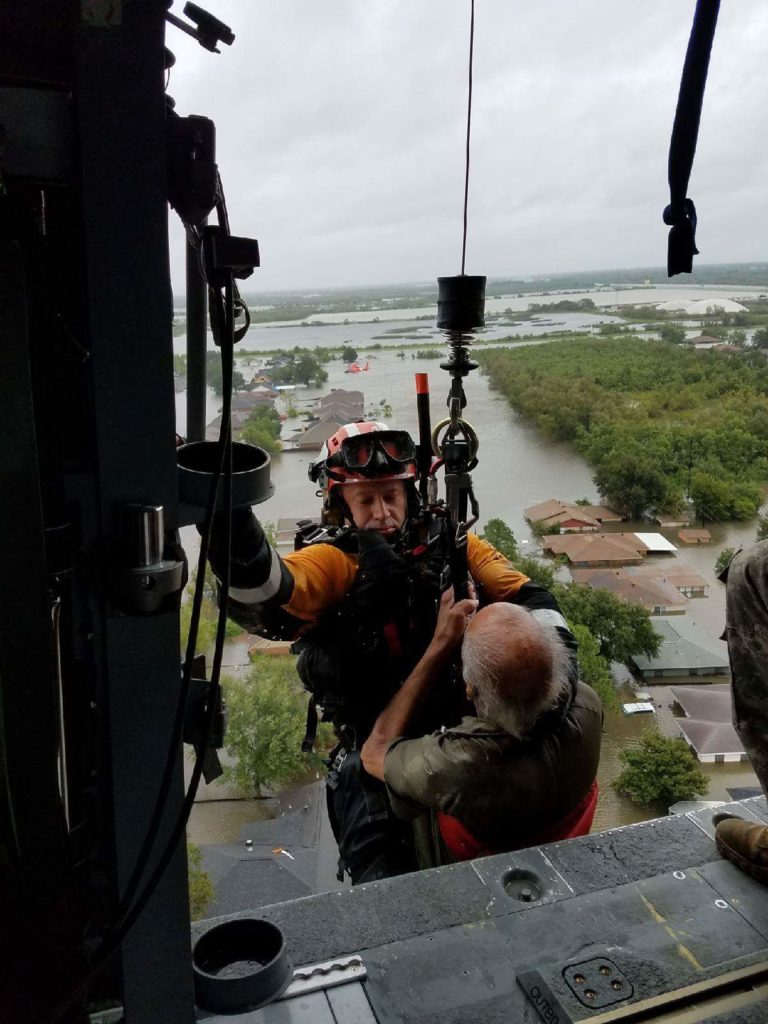
Like many children, when Hayden Baligad was young, he aspired to be like his father. But unlike many fathers, Hayden’s worked as a Helicopter Search and Rescue Technician (HSART) for Texas A&M Task Force 1 (TX-TF1). Now, at 26 years of age, Hayden is ready to follow in his father’s footsteps. On Wednesday, October 14, he, along with 33 others, completed the physical fitness evaluation as part of the application for the TX-TF1 HSART program. The HSART team, which currently consists of 21 members, has not accepted new technicians since 2016, and they only do so on an as-needed basis. The stakes are high, as 34 people are competing for only five openings.
The evaluation took place at the Texas A&M University natatorium, and although the usually resonant building seemed strangely quiet, the intensity was palpable. Participants completed a series of tasks in a limited amount of time: a one-mile run, a 300-meter swim, a 400-meter mask and snorkel fin swim, a dunker escape and a rope skills test that involved tying eight kinds of knots. While some of these challenges test specific skills or endurance, in the dunker escape, participants are strapped into a seat and rolled, upside down, into the water, where they count to five, unlatch the seatbelt and exit the dunker.
But this grueling physical test is only one component of the strict screening process. Applicants must also demonstrate that they have the proper background, experience, certifications and references. Brett Dixon, TX-TF1 Task Force Manager and Program Manager for Helicopter Search and Rescue, says, “We look at who can swim the fastest and run the fastest, but we also observe people as they go through the process so that we can see their character traits under stress.”
The application process needs to be rigorous because the job is so physically and mentally demanding. In dangerous swift-water rescues, technicians need endurance, strength and water confidence. Experience is also crucial to this job, as Joshua Powell, Helicopter Search and Rescue Technician with TX-TF1, explains, “The more experience you have in high-pressure situations, the more you tend to stay calm in these situations.” Because of this, applicants need experience in public safety, whether that means working for the Task Force, a fire department or emergency medical services.
The TX-TF1 HSART program officially began in 2008, when the Task Force partnered with the Texas Military Department and the Texas Army National Guard to put civilian helicopter rescue technicians on military helicopters equipped with a motor and cable that lowers rescuers into floodwaters. Dixon says, “This program marries the best resources that the state of Texas has to offer. Our Helicopter Search and Rescue Team is one of the most efficient resources we have. They can go out and get to people faster than anyone.” While it is often challenging to reach people by boat or all-terrain vehicle during a flood, Helicopter Search and Rescue Technicians can fly directly into difficult-to-reach locations.
Now that the physical fitness evaluation is complete, applicants wait for the next steps in the process, including an in-depth interview in January. Baligad shares the advice his father gave him before the assessment: “Swim your butt off. It’s a tough process. It’s something you have to be physically prepared for, and you have to be confident in the water.”
To learn more about the Texas A&M Task Force 1 and the Helicopter Search and Rescue Technician program, please visit https://texastaskforce1.org/ or https://texastaskforce1.org/helicopter-equipment/.
